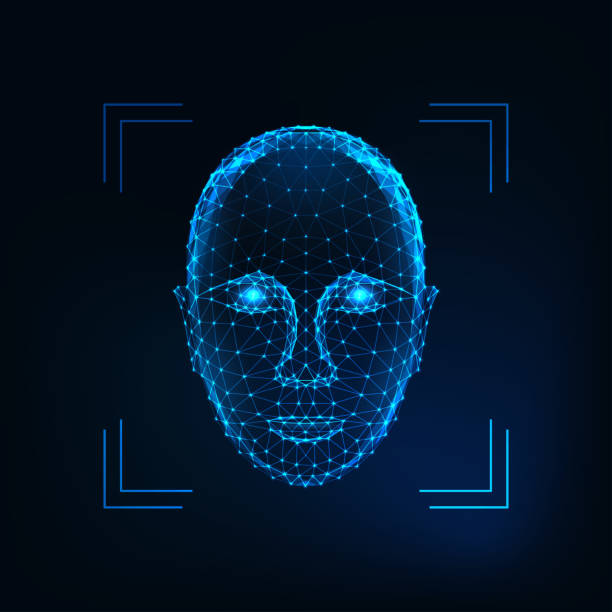Facial feature verification has gained immense popularity and the outbreak of the COVID-19 pandemic has been the major accelerating force. What once emerged as an attribute to sci-fi films has now become applicable to everyday processes. Moreover, face scanners are seen as bringing changes to the healthcare sector. Medicare service providers have to pay $429 per stolen record, which requires them to incorporate efficient identity verification solutions.
AI-powered face scanner are enabling the healthcare sector to bring in more effective countermeasures to fight fraud. An increase in medical identity theft, false insurance claims, and illegitimate access to records has made the use of biometric technology for patient verification mandatory. This blog sheds light on what facial recognition is and how it benefits medicare centers.
Face Detection System – Steps Involved in Verifying Patients
Since digitization is transforming medical services by incorporating telehealth, the sector is falling vulnerable to a noticeable increase in fraud risks. Criminals use stolen or fake information to create synthetic identities and reap healthcare benefits. These include virtual check-ups, prescription fraud, false insurance claims, and payments for online drug purchases under someone else’s name.
With more evolution within AI-powered biometric facial recognition solutions, the healthcare sector can secure its services. This helps the medical officials to assist legitimate and deserving patients while identifying importers in time. Technologically advanced face scanners come with tools that verify end-users more accurately. They ask for a real-time selfie and by using mathematical algorithms, these AI-powered solutions map, analyze and confirm the identities of patients. More insights regarding what is facial recognition and the steps it uses to validate end-users are in the next section:
-
Face Detection
Upon onboarding, the system asks patients to upload a real-time selfie while looking at a center point in the camera. After submission, AI-powered face scanners locate features within the image. Furthermore, machine learning is capable of self-leaning which helps in making systems understand how to capture faces within various data entries.
-
Face Map Analysis
After locating faces within the picture, the system uses mathematical algorithms to map features for extraction and cross-identity verification. This involves measuring distances between eyes and nose, jawline structure, and others. The AI-powered face scanner tools then convert these extractions into unique numbers for further analysis.
Fraudsters use masks, sunglasses, or spoofing attacks to hide their identities, however, AI-powered face detection systems still map features. This way, healthcare centers can minimize the need for manual efforts and provide remote patient onboarding.
-
Facial Features Recognition
In the last step, face scanner tools cross-match the extracted features with one on supporting documents. The AI-powered IDV solutions enable healthcare service providers to access global medical records that further provide an additional layer of accuracy to the patient identification process.
Widespread Applications of Face Recognition Services Within the Healthcare Sector
With its technologically advanced solutions, face identification systems are enhancing healthcare services. By providing solutions like liveness detection and real-time analysis, AI-powered services ensure secure patient onboarding. Similarly, face scanners are a reliable bet for medicare centers to restrict fraudsters’ access. While they forge case histories, identity documents, and treatment records, criminals can not fake distinct biological features. Further applications of face recognition services are in the next section:
Real-Time Patient Identity Verification
AI-powered face scanners help healthcare centers to build efficient onboarding mechanisms. With automated identity verification solutions, patients can skip hassle they experience at the time of physical check-ins. They further eliminate the need for manual interpretation, carrying huge files containing medical records, and human errors in validation.
The healthcare sector is bringing innovation in its services by providing patients with one-click options. For instance, they can access complete medical records, insurance details, payment information, and others by simply looking at their webcams or uploading real-time selfies. Hence, AI-powered face scanners pace up the registration process while streamlining secure access to their confidential data.
Facilitating Mental Health Therapy
facial recognition machine learning helps medical care providers to analyze and track the behaviors of patients. This also involves recording their mental health patterns. Furthermore, AI-powered face scanners can predict the emotional state of individuals under medical care assistance and enhance their security. Where these solutions enhance patients’ experience, they also help medical professionals cope with high levels of stress.
Managing patient records, providing accurate treatments, and facilitating global individuals without having to experience fraudulent activities is not an easy task. However, face detection systems help the medicare sector to streamline operations while improving its overall services.
Concluding Remarks
The facial identification systems are maturing with every passing year and providing robust solutions to the healthcare sector for improving their services. By using real-time patient identity verification, AI-powered IDV solutions limit access to fraudsters. Furthermore, technologically advanced face scanners identify fraudulent attempts while ensuring secure outreach of telehealth services. Hence, medicare service providers can build transparency, provide ease of access to electronic records, safeguard information, and leverage hassle-free assistance.
